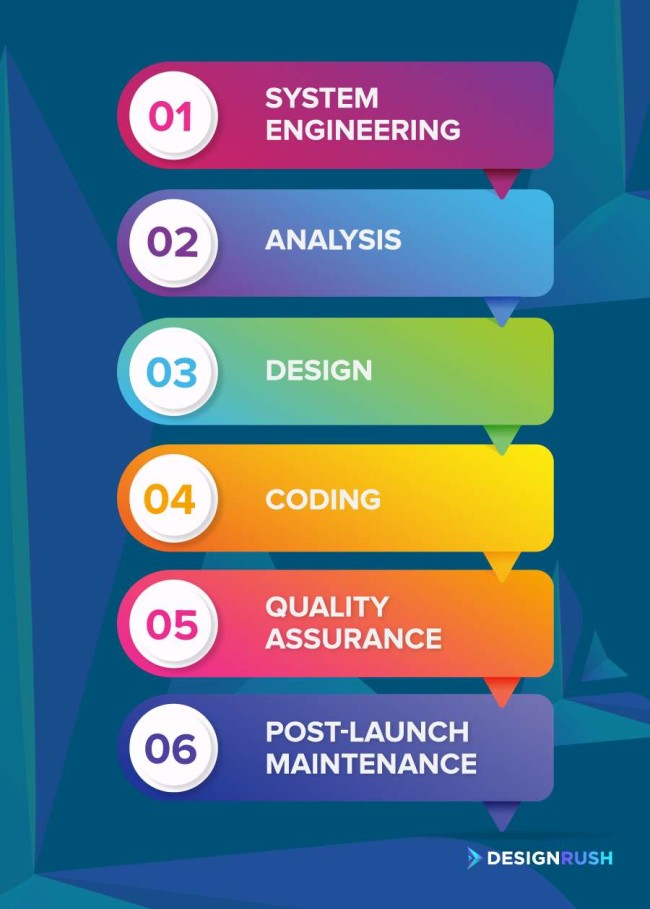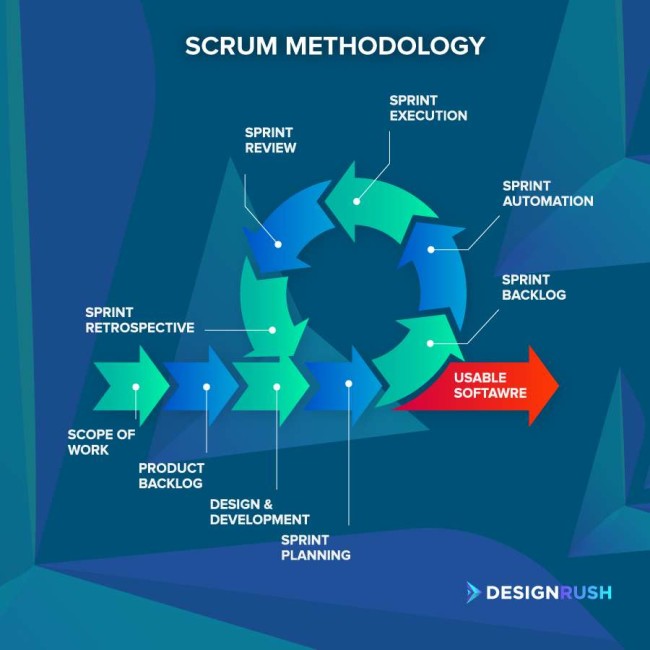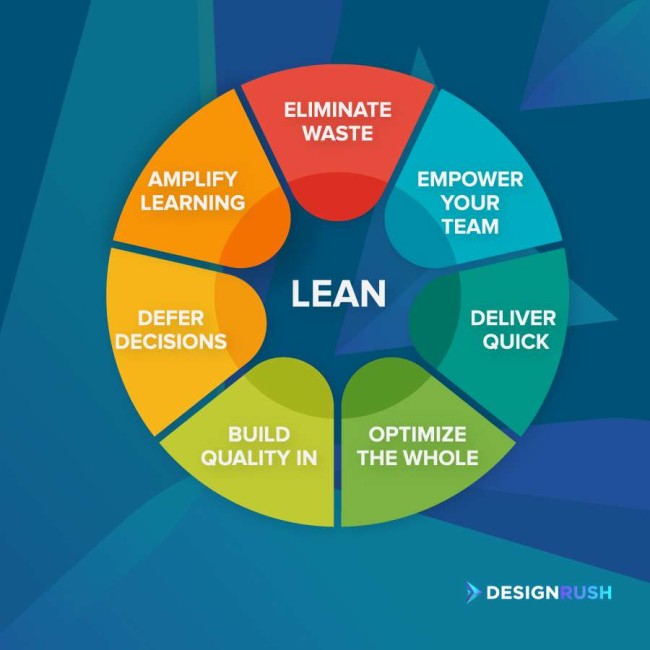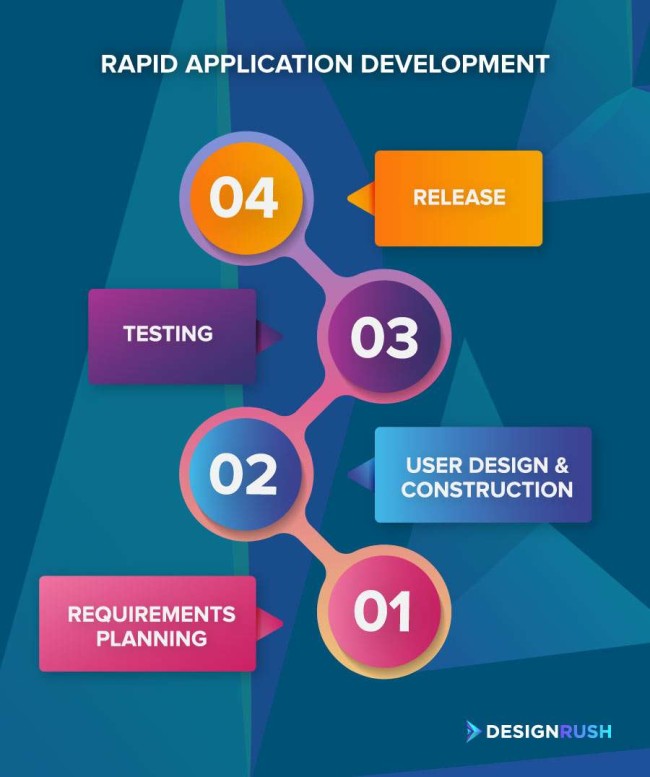Adapting to clients’ changing requirements, missed deadlines, and exceeding budgets are the greatest challenge for software developers. Still, you can solve all these issues by opting for one software development methodology and sticking to it.
This article explains seven leading software development methodologies, their pros and cons, and how to choose the best one for your needs. But let’s start with the basics.
Table of Contents
- What Is Software Development Methodology?
- How Software Development Methodologies Inform The Process And Final Product
- 7 Leading Software Development Methodologies
- How To Choose The Software Development Process That’s Right For You
- Takeaways On Software Development Methodologies
- Software Development Methodologies FAQs
What Is Software Development Methodology?
Software development methodology refers to a set of processes, practices, and principles guiding software development. It encompasses all aspects of software development, from initial planning and requirements gathering to coding, testing, deployment, and maintenance.
Software development methodology improves project management, ensuring software development projects are completed on time, within budget, and meet the end-users' needs. It also provides better quality control, greater teamwork efficiency, collaboration, communication, and stakeholder engagement.
There are many types of software development methodologies, each with its strengths and weaknesses, which we’ll discuss later in the article. Choosing the right one depends on various factors, including the project's complexity, the development team's size, timeline, and budget.
How Software Development Methodologies Inform The Process And Final Product
An often overlooked and underestimated part of software development is choosing a methodology most fitting for the project. Factors such as project cost, deadline, and software requirements play a role in determining how the software project will be executed.
The software development methodology is a specified set of processes outlining the path to successfully delivering and deploying the software product.
The benefits of establishing a specific software development methodology and project framework are:
- Project costs stay constant
- Development teams adhere to the schedule and meet the deadline
- Unrelated administrative discussions are eliminated from the project
- Teamwork improves
- Developers meet the requirements
- Project management avoids the burnout
Let’s take a look at the advantages and disadvantages of the seven most frequently used software development methodologies.
7 Leading Software Development Methodologies
- Agile
- Waterfall
- Scrum
- Lean
- Rapid Application Development
- Feature-Driven Development
- Rational Unified Process
Below are the seven most often used and proven methodologies for developing software products.
1. Agile Software Development
Agile, an innovative software development methodology, is based on evolutionary development, flexible response to change, and improvement through adaptive planning. Agile development creates software solutions over shorter time frames called “iterations.” Each iteration can last between a week and a month.
While agile software development has flexibility, it is a disciplined management process that allows alterations while the project is underway. It results in fast software release with a lower risk of bugs and other issues such as cost overruns and changing requirements.
Advantages:
- An adaptive approach that responds to the client’s changing requirements.
- Feedback and direct communication with stakeholders and development teams diminish guesswork and minimize the risk of misunderstandings.
- Improved transparency between the client and the development team.
- Finds and fixes errors and defects quickly and identifies a mismatch between expectations and the actual product early on, improving the end-product quality.
- Working software can be produced before the final stage.
Disadvantages:
- Focus on software and lack of documentation may cause functioning issues
- Agile projects may sway off track if the client is not clear about their objectives

2. Waterfall Software Development
Waterfall is a traditional and most common software creation process. Quite the opposite of Agile, Waterfall is linear and strict and requires developers to complete the current stage or task before moving on to a new one. Waterfall stages gradually flow into each other, and developers do not return to the previous step to handle changes in requirements.
This method’s life cycle flow assumes a strict sequence of completed tasks. Waterfall’s linear process simplifies software engineering tasks, best suited for smaller projects with well-defined requirements.
Advantages:
- Simple, easy to understand, gradual, and analytical process
- Suitable for software development beginners
- The rigidity of the model makes it very manageable
- Each phase has an individual review process and specific deliverables
- Tasks are processed and completed at once, saving a lot of time
- Simple operation makes testing and analysis easier
Disadvantages:
- Precise and up-front requirements are needed to make this method work
- Not suitable for maintenance or long, ongoing projects
- The development cycle has to reach the last stage to produce working software
- Once the software is in the testing phase, it is not possible to go back and make changes

3. Scrum Software Development
A multi-faceted approach applicable to any type of software project, Scrum is most suitable for developing projects with rapidly changing requirements.
It begins with brief planning, continues with daily stand-up meetings (or scrums) during which the progress is reviewed, and closes with a final review. This speedy software development consists of multiple work iterations (or sprints) needed to create the required product.
Its greatest advantage over other processes is keeping even slow-progressing projects on track. Scrum software development is designed for teams of three to nine members who can complete the project in two weeks.
Advantages:
- Development teams make all the decisions and work at their own pace
- Business requirements documentation is not very significant for the project’s success
- Flexible method that handles frequent changes and updates and speeds up the development process
- Measures individual productivity in daily meetings, leading to better productivity of team members
Disadvantages:
- Not suitable for large projects
- Requires an experienced team with a broad skill set that works in close proximity with each other
- Requires a lot of planning due to division of the project into sprints

4. Lean Software Development
Lean is a flexible, strategically focused software development process that creates software solutions that are easy to edit and change. It is ideal for limited budgets and minimal requirements.
The lean methodology applies lean manufacturing principles to software development to decrease programming efforts and defect rates. It has a solid conceptual framework and offers developers strong principles based on established rules.
This software development process requires specifications to be examined to the last detail beforehand to eliminate wasted time or budget. Its core component is value for the client, making feedback and fast action crucial.
Advantages:
- Follows the core Agile Manifesto principle of “find good people and let them do their own job”
- Speedy process and reduced costs
- Developers can deliver more functionalities in a shorter period of time
- Development team has more decision-making freedom, empowering individuals and introducing motivation
Disadvantages:
- The success of the project depends on the team’s discipline and technical ability
- Additional training may be required
- A business analyst must make sure that documentation is correct and that everyone understands it
- Too much flexibility may result in poor focus that could compromise the project

5. Rapid Application Development
Feature-driven methodology is best suited for big teams working on project-oriented or object-oriented technology and organizations moving from stage-based to iterative approaches.
Feature-driven development combines several software development practices and methodologies into one. Its main objective is to prioritize software development around its features and deliver working products quickly.
Advantages:
- Reduces risks of poor execution thanks to constant client feedback and early issues detection
- Users interact with prototypes, resulting in a product of higher quality
- Speedy development due to less planning and documentation
- Frequent feedback makes client and developer cooperation transparent
Disadvantages:
- Relatively new and risky method
- Not suitable for small budget projects due to costs of modeling and automated code generation
- The fast-moving nature of this method requires an experienced team that works together for a lengthy period of time

6. Feature-Driven Development
This software development methodology is best suited for big teams that work on project-oriented or object-oriented technology and organizations that are moving from stage-based to iterative approaches.
Feature-driven development combines several software development practices and methodologies into one. Its main objective is to focus on organizing software development around its features and delivering working products quickly.
Advantages:
- Helps move large projects with continued success
- Obtains structure and a good overview of the project through its five simple processes: model development, feature list building, planning, design, and build by feature
- Built on set standards for software development and uses industry’s recognized best practices, making it easy for developers to understand the method quickly
Disadvantages:
- Not suitable for smaller projects and teams due to complexity
- Lead developers need to be highly trained and fully equipped because a lot of responsibility is on them
- This highly complex process needs to be monitored at each phase to avoid significant issues

7. Rational Unified Process
RUP methodology splits the software development life cycle into four phases: inception, elaboration, construction, and transition. Each contains business modeling, analysis, design, implementation, testing, and deployment. RUP’s main objective is to achieve fast results using other methodologies' assistance.
This adaptable process is object-oriented and allows developers to find suitable guidelines, templates, and examples for all aspects and stages of development. Teams can tailor this framework according to their organization. As a result of adjustable fast prototyping and iterations, developers get quick feedback and can eliminate errors on the go, reaching optimal product outcomes.
Advantages:
- Makes development process easy and assists clients with quick reviews
- Encourages feedback from clients
- Helps team members identify and resolve project risks associated with client’s changing requirements via request management
- Scalable and suitable for any team or project of any size
- Reviews help maintain focus and improve client-developers transparency
Disadvantages:
- Highly complex, potentially disjointed process that’s difficult to understand and requires a skilled team
- Continued testing and integration increase complexity, which may lead to new issues
- Too much dependency on team performance

How To Choose The Software Development Process That’s Right For You
- Evaluate The Requirements Flexibility
- Define The Software’s End-Users
- Be Aware Of The Project Size
- Evaluate Your Development Time Frame
- Consider The Development Team’s Location
These five tips can help you choose the software development process suitable for your needs:
1. Evaluate The Requirements Flexibility
Before deciding on one software development methodology, you should consider the flexibility of your software specification. The agile approach is ideal for web and app development, in which changes are frequent along the way. Waterfall is a good method for classic software development in which predictability and stability in all phases are present.
2. Define The Software’s End-Users
If your target audience is diverse, there will likely be a huge number of requests to include new features in the software after the launch. The Agile method would be the most helpful for this scenario as it lets you step back and edit your product. Still, if your software targets a controlled group of users, there will likely be a fixed set of requirements, making the Waterfall method ideal.
3. Be Aware Of The Project Size
As we’ve seen, each software development methodology requires a certain number of developers in the team. The number of developers will depend on the scale of the project.
Big projects will require a more elaborate project management plan. These orderly plans are best suited to the streamlined Waterfall methodology.
4. Evaluate Your Development Time Frame
If the time frame for software development is long-term and there are no deadlines, the Waterfall methodology is the best choice. However, for developments that go through sprints, with deadlines fast approaching, Agile and other iterative-based methodologies are the most fitting choice because they make the release of partially finished products possible.
5. Consider The Development Team’s Location
Accountability, coherence, and coordination are all very important if you’re working with an outsourced remote development team. In these scenarios, a rigid development method like Waterfall is best.
Agile, feature-driven, and rapid application development methodologies require a lot of meetings and frequent discussions with teams that work closely together. They are a better option for software development teams that are near you.
Takeaways On Software Development Methodologies
Choosing a software development methodology that is right for your project before the process begins is important because implementing methodical changes down the road can be difficult.
Knowing the software requirements and the scope of the project are two of the most important factors that will inform the type of methodology you will use and help you find the software development team that’s right for you.
Software Development Methodologies FAQs
1. Which software development methodology should I use?
The software development methodology you should use depends on the size and complexity of the project, the available resources, the timeline, and the specific needs and requirements of the project.
For example, if your project is relatively small and simple, you might consider using a simpler methodology such as Waterfall. However, you might consider using an Agile methodology if your project is more complex and requires flexibility and adaptability.
2. Why adhere to software development methodology?
Adhering to a software development methodology can help ensure that software development projects are completed successfully, with a high-quality end product that meets the needs of stakeholders and end-users. It also improves collaboration and communication between team members, improving efficiency and project management.









